In the rapidly growing solar energy industry, the design of the structures supporting solar panels is often overlooked, yet it plays a crucial role in system performance, efficiency, and longevity. A well-designed solar structure ensures that the panels are securely mounted, able to withstand environmental forces, and optimally positioned for maximum energy capture.
However, getting the design right isn’t easy. Environmental factors like wind, snow, temperature fluctuations, and seismic activity, along with material choices and installation challenges, can all impact the system’s success. For solar systems to deliver their promised benefits, these factors must be carefully considered.
This article delves into the essential considerations for solar structure design, highlighting common challenges and emerging trends that are shaping the future of solar energy. Whether you’re a designer, installer, or decision-maker, understanding these key elements is vital to ensuring efficient and sustainable solar installations.
What to Expect in This Blog:
Why Is Solar Structure Design Important?
In solar power systems, the design of the structure that supports the solar panels is a critical factor in ensuring both performance and long-term durability. A poorly designed structure can compromise the entire system, affecting energy output and increasing maintenance costs over time.
The importance of structural design goes beyond merely holding up the solar panels. It ensures that the panels are securely mounted to withstand external forces such as wind, snow, and seismic activity. For instance, incorrect load calculations or inadequate material choice can lead to panel misalignment, ultimately reducing system efficiency. In fact, solar installations in areas with high wind speeds or heavy snow loads require specialized structural designs to prevent potential failure.
Moreover, the design influences the system’s energy performance. The optimal tilt, orientation, and spacing of panels can directly affect their ability to capture sunlight throughout the year. A well-optimized structure can improve energy yield by up to 20% in some cases by ensuring panels are positioned to maximize sunlight exposure and minimize shading.
Ultimately, a properly designed solar structure not only ensures safety and stability but also enhances the overall efficiency and lifespan of the solar power system. This makes it a key factor in achieving a cost-effective, reliable, and high-performance solar installation.
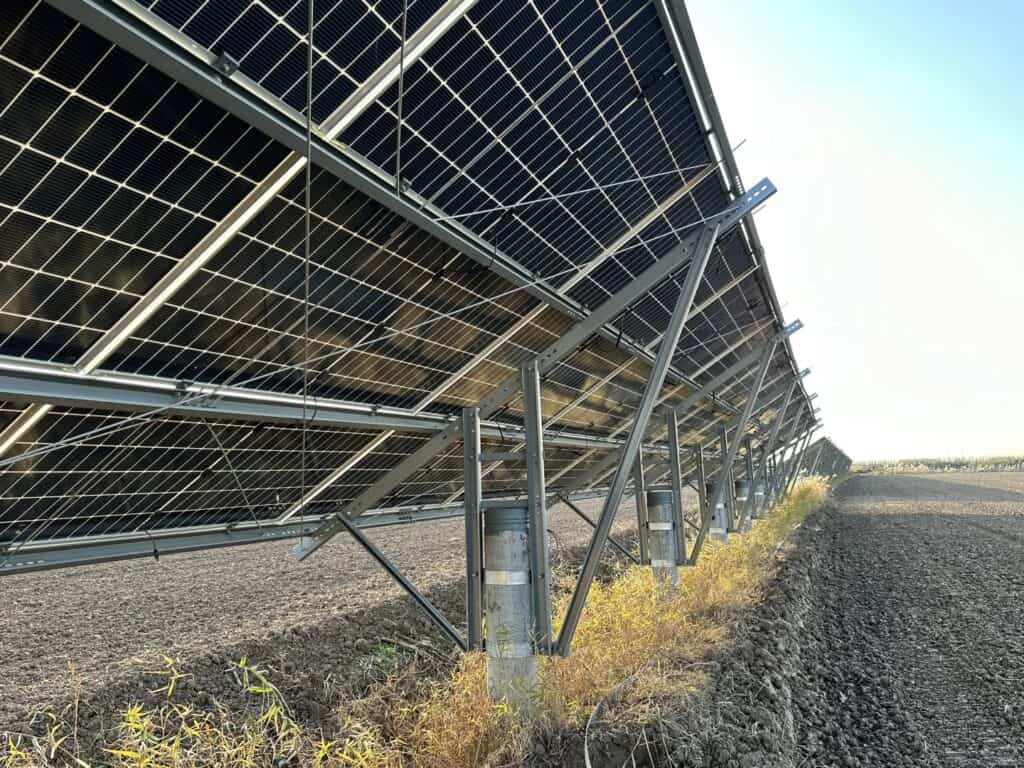
What Are the Key Environmental Factors to Consider in Solar Structure Design?
When designing solar structures, it’s crucial to account for the environmental conditions the system will face. Environmental factors like wind, snow, temperature fluctuations, and seismic activity can directly impact the safety, durability, and efficiency of the system. Each factor requires careful consideration and often influences key design decisions.
Wind and Snow Loads
Wind and snow loads are two of the most critical factors that determine the stability of the solar structure. For areas exposed to high winds, the structure must be designed to resist wind-induced forces. The design process typically involves calculating the wind load using local wind speed data and applying these loads to the structure. High winds can cause panels to shift, loosen mounting points, or even detach if the structure isn’t properly reinforced.
Snow loads also play a significant role, particularly in colder regions. The weight of accumulated snow can stress the mounting system, causing bending, shifting, or even panel damage. In areas prone to heavy snowfall, structures are often designed with a steeper tilt angle to allow snow to slide off. Engineers use local snow load data to determine the required structural strength to bear the weight without compromising safety.
Temperature and Expansion
Temperature fluctuations affect the materials used in solar structures, especially metals like steel and aluminum. These materials expand and contract with temperature changes, so the design must allow for this movement. If temperature-induced stresses are not properly accounted for, it can lead to material fatigue, warping, or cracking over time. The design needs to consider the local temperature range, ensuring the materials chosen can withstand both high and low temperatures without losing structural integrity.
Seismic Activity
In seismic regions, additional design considerations are needed. Earthquakes can cause substantial shifting and tilting of panels, which can lead to misalignment or failure if the structure isn’t adequately designed to resist seismic forces. Special seismic brackets or reinforced mounting systems are often incorporated into the design to prevent panel movement during seismic events. Adhering to local seismic codes is crucial to ensure that the structure remains secure and compliant with safety regulations.
How Do Material Choices Affect Solar Structure Design?
The choice of materials is crucial for ensuring the strength, durability, and overall performance of a solar structure. Both steel and aluminum are commonly used in solar installations, and each material offers unique benefits depending on the environmental conditions, load requirements, and budget constraints.
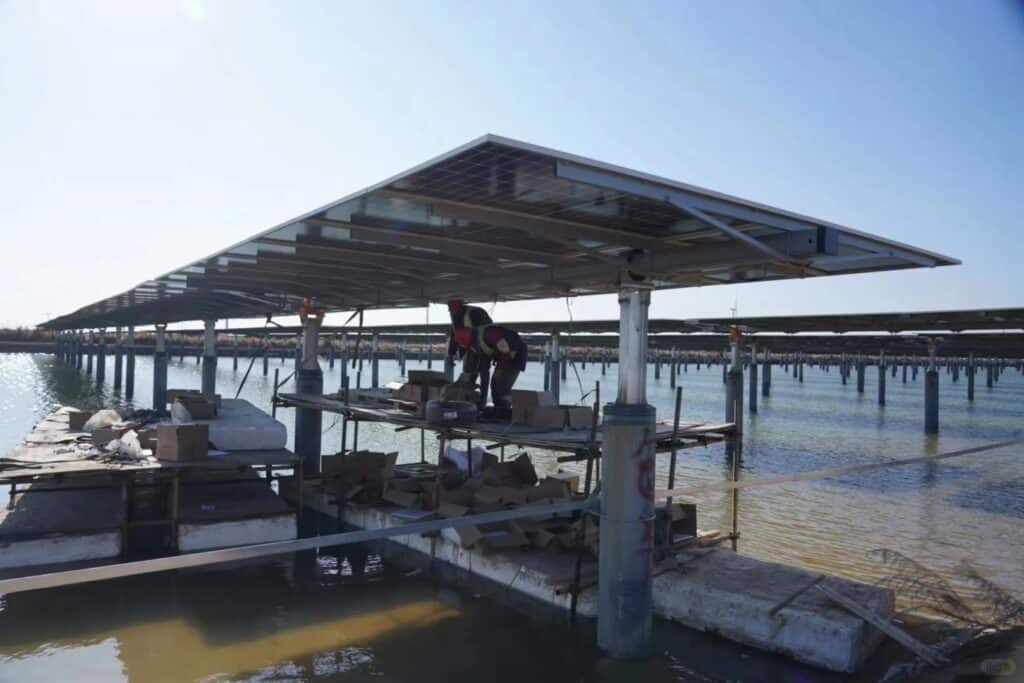
Steel vs. Aluminum: Strength, Weight, and Durability
Steel is known for its strength and is often the preferred option for heavy-duty structures. Its higher weight may increase transportation and installation costs but provides stability in areas with extreme weather or heavy loads.
Aluminum, while lighter and easier to handle, is also highly resistant to corrosion, making it a good choice for installations in coastal or humid environments. While aluminum may have slightly lower strength in some cases, its lightness and corrosion resistance can be particularly valuable in certain conditions.
Corrosion Resistance: Essential for Long-Term Performance
Corrosion is a key factor when selecting materials, especially in regions with high humidity or proximity to saltwater. Steel can be treated with coatings, such as galvanization, to prevent rust, while aluminum naturally resists corrosion by forming a protective oxide layer. Both materials can be designed to withstand the effects of corrosion, but the level of treatment required and its impact on maintenance costs should be considered.
Environmental Considerations and Material Suitability
The location and environmental conditions play a significant role in material selection. Steel is more suited for environments with higher temperatures, while aluminum performs well in cooler climates. In areas with coastal exposure or high humidity, aluminum’s inherent corrosion resistance might provide a longer lifespan with lower maintenance requirements. However, in regions with heavy snow or wind loads, steel’s strength might be more appropriate to ensure the structure’s stability and safety.
Cost and Installation Considerations
While steel may offer a lower initial cost, its weight could increase transportation and installation costs. Aluminum, on the other hand, tends to be more expensive but can reduce costs in terms of handling, installation, and long-term maintenance due to its corrosion resistance. Ultimately, the material choice depends on balancing cost, environmental factors, and performance needs.
In conclusion, both steel and aluminum have their advantages, and the best material for your solar structure will depend on your specific project requirements and environmental conditions.
Further Reading:
What’s the Best Solar Panel Structure Material for Your Project?
How Does the Slope and Orientation of Panels Affect the Design?
The angle and orientation of solar panels play a crucial role in maximizing the energy output of a solar power system. Optimizing the slope and orientation ensures that the panels receive the most sunlight possible throughout the year, which directly affects the system’s overall efficiency. This section will explore how the design of tilt and orientation influences solar structure design and how to make the most of these factors.
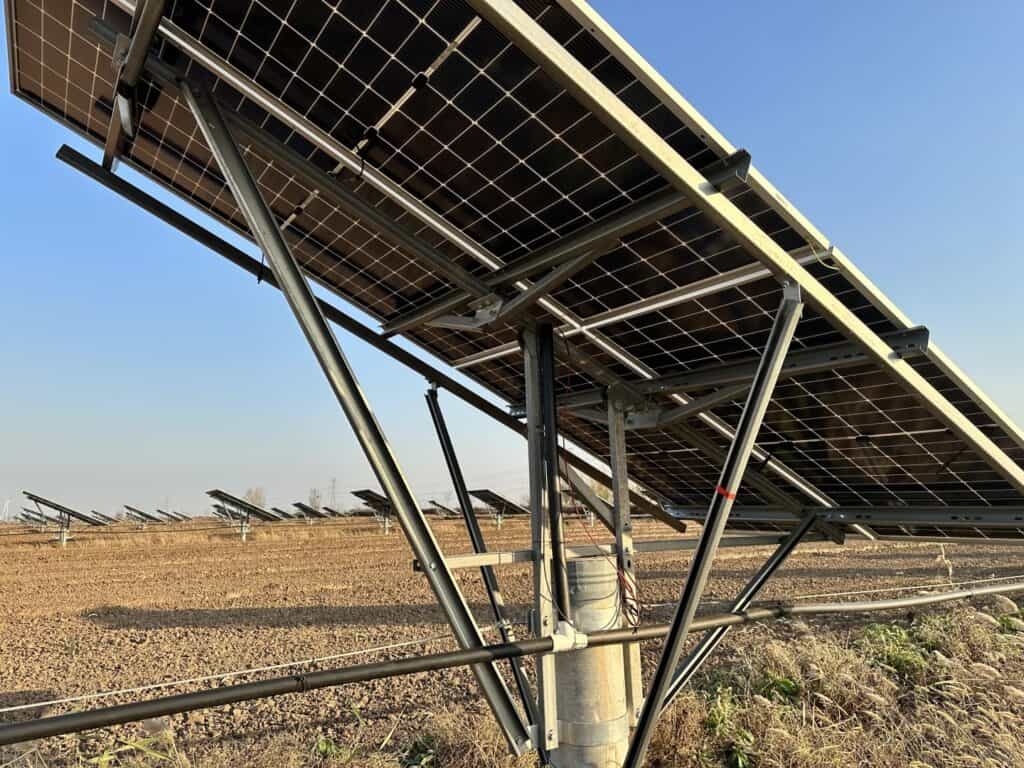
Optimizing Tilt Angle for Maximum Energy Capture
One of the most important considerations when designing a solar structure is the tilt angle of the panels. The optimal tilt depends on the geographical location and the specific energy goals of the installation. In general, solar panels should be tilted at an angle that allows them to capture the most sunlight during peak hours.
In regions closer to the equator, panels are often tilted at a smaller angle to maximize energy capture in the summer when the sun is higher in the sky. Conversely, in areas farther from the equator, a steeper tilt may be more effective to capture sunlight during the winter months when the sun is lower.
However, there are practical limitations to how steep or shallow the tilt can be, based on the structure’s design and the physical space available. In some cases, adjustable tilt systems are used to optimize the angle throughout the year, providing a more flexible solution.
Panel Orientation: Maximizing Sunlight Exposure
The orientation of the panels, or the direction they face, is another critical factor in optimizing energy production. Ideally, panels should be oriented toward the sun’s path to maximize exposure. In the northern hemisphere, panels should generally face south, while in the southern hemisphere, they should face north. This positioning ensures that the panels capture the most sunlight throughout the day.
In addition to maximizing exposure to sunlight, orientation also affects the performance of individual panels. Shading from nearby buildings, trees, or other obstacles can reduce panel efficiency. Therefore, solar structure design should consider the surroundings and potential sources of shading, ensuring panels are positioned to minimize any obstructions.
Adjustable vs. Fixed Tilt Systems
While fixed tilt systems are simpler and more cost-effective, adjustable tilt systems offer greater flexibility. Adjustable tilt systems allow the angle of the panels to be modified throughout the year to maximize energy capture during different seasons. This system can be particularly useful in regions with significant seasonal variation in sunlight. However, adjustable systems tend to be more expensive and may require more maintenance.
Fixed tilt systems, on the other hand, provide a more straightforward solution with lower upfront costs and easier installation. They are suitable for regions with less variation in sunlight throughout the year or when the additional flexibility of an adjustable system is not necessary.
Design Considerations and Space Constraints
When determining the tilt and orientation of solar panels, available space must also be taken into account. For rooftop installations, the slope of the roof and available area for mounting may limit the optimal tilt angle. In such cases, the design must balance maximizing energy output with the constraints of the space.
For ground-mounted systems, the design is more flexible, and the tilt can be adjusted based on land area and orientation preferences. However, ground-mounted systems may also be affected by local zoning regulations or space limitations.
What Are the Common Mounting Systems in Solar Structure Design?
When choosing a mounting system for a solar installation, several factors such as available space, budget, and desired performance must be considered. Here we’ll discuss the main types of mounting systems: ground-mounted, rooftop-mounted, fixed tilt, tracking systems, and hybrid solutions.
Ground-Mounted vs. Rooftop Systems
- Ground-Mounted Systems: Ideal for large-scale installations where land is available, ground-mounted systems offer flexibility in panel tilt and orientation, optimizing energy production. They are typically more expensive due to land and installation costs but are often more suitable for large commercial projects.
- Rooftop Systems: These are installed on building roofs, making them an ideal choice for residential or urban installations. They reduce land usage and lower land costs, but the roof’s structural integrity and available space are key considerations. Rooftop systems may also face challenges from shading or structural limitations.
Fixed Tilt vs. Tracking Systems
- Fixed Tilt Systems: These systems are simple, cost-effective, and have fewer moving parts, making them easier to install and maintain. They are best for areas with relatively consistent sunlight. While they are efficient, they don’t fully capture the sun’s movement, which may result in lower energy production compared to tracking systems.
- Tracking Systems: These systems follow the sun’s movement, which maximizes sunlight exposure throughout the day. Single-axis trackers follow the sun from east to west, while dual-axis trackers also adjust north to south. Tracking systems can increase energy output by 25-35%, but they come with higher upfront costs and more complex maintenance requirements. For areas with higher winds or extreme weather conditions, durability and ongoing maintenance become more critical.
Hybrid Solutions
In some installations, a combination of fixed tilt and tracking systems can offer the best of both worlds. Hybrid solutions allow for flexibility by using tracking in areas that benefit from it and fixed tilt in other areas where tracking might not be cost-effective. This approach helps balance costs and performance while accommodating the specific needs of the installation site.
Further Reading:
A Practical Guide to Types of Solar Mounting Structures
What Are the Key Structural Standards and Codes for Solar Installations?
Structural standards and codes are essential for ensuring the safety, performance, and compliance of solar installations. They guide the design, materials, and environmental load considerations to ensure that solar systems can withstand the forces they will face. This section highlights key global and regional standards and their impact on solar project design and approval.
Global Standards
Several global standards govern solar structure design, with the most widely recognized being those from the International Electrotechnical Commission (IEC) and the International Organization for Standardization (ISO).
- IEC Standards: The IEC’s standards, such as IEC 61215 and IEC 61730, focus on the durability and safety of solar panels, ensuring they can withstand environmental stresses. While primarily concerned with the panels themselves, these standards also guide how panels integrate into structures for optimal safety and efficiency.
- ISO Standards: ISO provides broader environmental guidelines, such as ISO 14001, which focuses on sustainability and environmental management, affecting material choice and waste management during installation.
Regional Standards and Codes
In addition to global standards, local regulations adapt to specific environmental conditions and safety requirements, ensuring solar systems are appropriately designed for their location.
- United States (IBC and ASCE): The International Building Code (IBC) and American Society of Civil Engineers (ASCE) provide guidelines for load calculations, including wind, snow, and seismic activity. These codes ensure that rooftop solar installations meet requirements for structural integrity and safety.
- European Union (Eurocodes): The Eurocodes cover comprehensive structural design, including Eurocode 9 for aluminum structures, which is crucial for solar systems using aluminum mounts. These codes ensure solar systems in Europe meet high safety and performance standards, especially in regions with high wind or snow loads.
- Other Regions: Countries like Japan and Australia have region-specific standards, especially focusing on seismic and wind load requirements. For example, Japan’s JIS standards prioritize seismic resistance, while Australia’s codes address wind load considerations.
How Standards Impact Design and Approval
Adhering to these standards is crucial for ensuring the safety and effectiveness of solar installations. Compliance with these regulations not only helps avoid design errors but also facilitates project approval and ensures that systems can withstand environmental conditions specific to their location. For example, a solar system in an earthquake-prone region will require seismic-specific design adjustments, while a system in a high-wind area will need reinforcement against wind forces.
What Are the Common Challenges in Solar Structure Design?
Designing solar structures involves navigating several key challenges that directly affect the feasibility, cost, and long-term performance of a system. These challenges arise from a variety of sources, from environmental conditions to logistical constraints, and they require creative and practical solutions to ensure that the system functions as intended. Let’s take a closer look at some of the most significant challenges that arise during the design process.
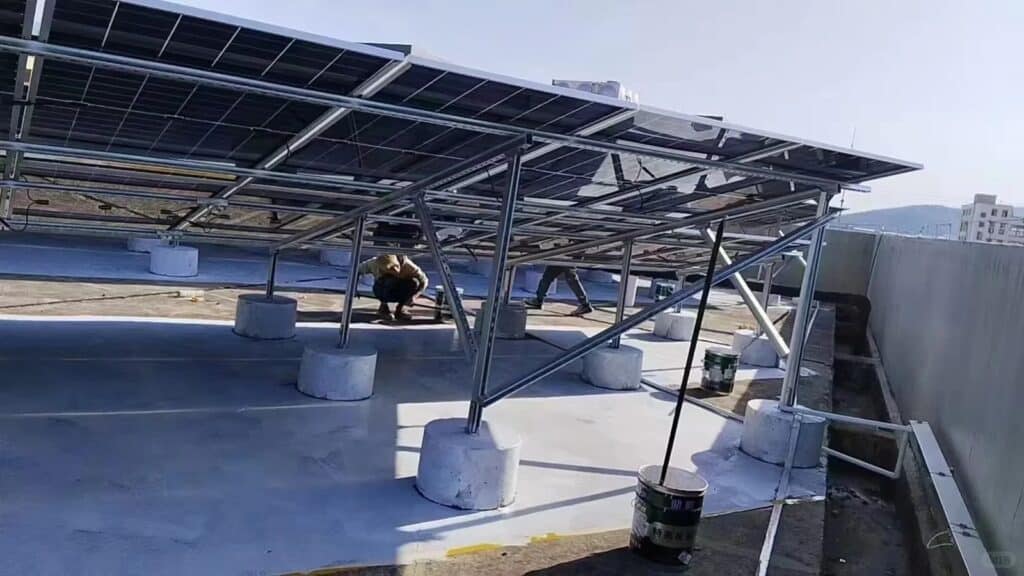
Overcoming Environmental Forces
One of the greatest challenges in solar structure design is dealing with environmental forces that impact the system’s stability and longevity. Wind, snow, and seismic activity present the biggest hurdles, but each region has its own set of challenges depending on the environment.
For example, high winds can lead to panel displacement or structural failure if not properly accounted for. In coastal areas, saltwater corrosion accelerates material degradation, making corrosion resistance crucial. Heavy snow loads in colder regions can result in bending, misalignment, or even collapse if the structure isn’t adequately designed to handle the weight.
Each of these factors requires precise calculations and material selection to ensure the system can endure without compromising safety.
Designing for Site-Specific Constraints
Every installation site presents unique challenges, and this is one of the most complex aspects of solar structure design. Whether you’re dealing with a roof-top installation or ground-mounted systems, site-specific conditions can be difficult to anticipate.
On rooftops, weight-bearing capacity and space limitations are often overlooked until installation begins. Poorly planned designs may end up underutilizing available space or placing too much load on weak areas of the roof.
Ground-mounted systems may encounter uneven terrain or limited access, which can delay installation or increase costs if the land requires substantial preparation or modification.
These constraints often force designers to come up with creative solutions that maximize efficiency without compromising the structure’s integrity.
Balancing Performance with Budget and Time
While designing a solar system, the challenge of balancing performance with budget and time constraints is ever-present. The pressure to meet a tight budget can lead to compromises in material quality or complexity of the design.
For instance, opting for a less expensive material might reduce upfront costs but could lead to higher maintenance costs or a shorter lifespan of the structure. Similarly, when project timelines are tight, there may be a rush to complete the design and installation, leading to shortcuts or oversights.
Finding a balance between cutting costs and ensuring that the solar system can withstand environmental factors and perform efficiently is a key challenge that requires careful planning and foresight.
Managing Unexpected Site Conditions
Unexpected site conditions can cause major setbacks during installation.
For example, when installing a ground-mounted system, the land might contain rock formations, wetlands, or other unexpected obstacles that make installation more difficult and expensive. Rooftop installations face similar issues, such as unforeseen structural weaknesses or shading from nearby buildings that weren’t initially apparent.
These issues require quick adjustments and sometimes force the design team to rethink the mounting strategy or materials used. The key challenge here is ensuring the installation can proceed smoothly despite these unforeseen complications, without compromising the project’s timeline or safety standards.
How Does Installation and Maintenance Influence Solar Structure Design?
Designing a solar structure doesn’t just mean focusing on its functionality and efficiency during operation. The installation process, the ease of maintaining the system, and its long-term durability are just as important. These aspects significantly influence the design choices made and directly impact the overall cost-effectiveness and success of the solar installation. Let’s explore how installation and maintenance considerations shape the design of solar structures.
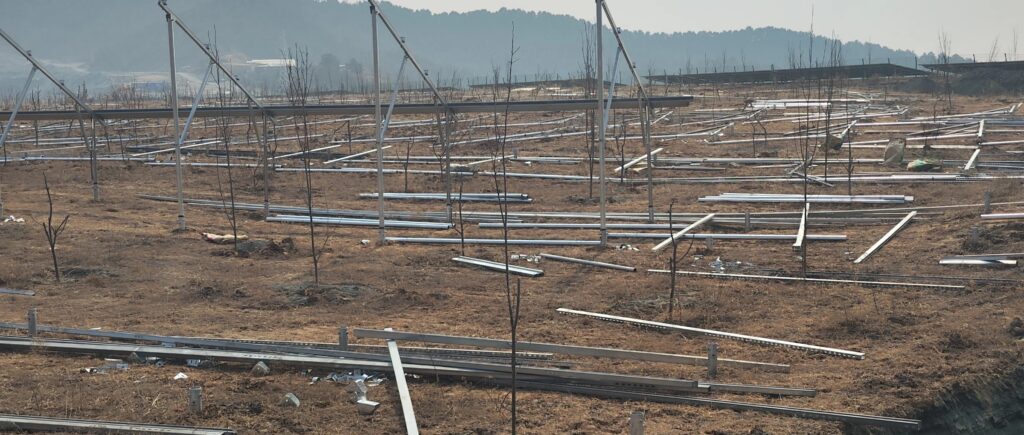
Simplifying Installation for Efficiency
When designing solar structures, engineers must prioritize making the installation process as smooth and efficient as possible. The more complex the system, the more time it will take to install, and the higher the associated costs. For example, custom parts or complicated assembly processes require skilled labor and longer timelines, which increase the overall installation cost.
To mitigate this, designers often aim for systems that are easy to assemble with minimal adjustments needed on-site. Using pre-fabricated or modular components can significantly reduce installation time. For instance, pre-assembled mounting systems or quick-connect electrical components can speed up the process, ensuring the solar system is up and running as quickly as possible. This not only reduces labor costs but also minimizes the risk of errors that could lead to future maintenance issues.
Maintenance Considerations for Longevity
Once the solar system is installed, ongoing maintenance is necessary to ensure its optimal performance. Solar panels, for instance, may need to be cleaned periodically to remove dust, dirt, or debris that can reduce efficiency. Systems need to be designed with this in mind—ensuring that panels are positioned in a way that makes them easy to clean without requiring complex setups or dangerous access points.
For ground-mounted systems, designers may incorporate elevated structures or pathways to allow maintenance crews to access panels easily. Similarly, rooftop systems should be designed to ensure safe access for cleaning and inspections. This careful planning of accessibility can prevent costly maintenance errors or delays.
But maintenance isn’t just about cleaning panels. Designers must also consider how the structure itself will withstand the wear and tear of the environment. The materials used must resist environmental stressors like corrosion, UV damage, and temperature fluctuations, all of which can degrade the system over time. By selecting durable materials and designing with long-term maintenance in mind, designers can reduce the frequency and cost of repairs.
Designing for Long-Term Durability
One of the primary goals of solar structure design is to ensure the system’s longevity. The design should anticipate the natural aging process of both the structure and the panels, as all components will degrade over time. This means choosing materials that can stand up to years of exposure to harsh weather conditions, like high winds, extreme temperatures, or even saltwater in coastal regions.
Materials like aluminum, galvanized steel, and stainless steel are often chosen for their resistance to corrosion and their ability to withstand various environmental stresses. Solar panels themselves also undergo wear, so designing the structure to accommodate easy panel replacement or upgrades ensures that the system continues to perform efficiently for decades.
Long-term durability also means considering the system’s overall resilience. Systems that require constant repairs or part replacements can quickly become financially unsustainable. On the other hand, systems designed with robust, low-maintenance materials will continue to perform at high levels with minimal downtime and lower maintenance costs.
The Bigger Picture: A System Built for the Future
Incorporating installation and maintenance considerations into the design process is crucial not only for immediate performance but also for long-term success. A system that is easy to install reduces initial project costs and ensures the solar system is operational as quickly as possible. A design that takes maintenance needs into account will lower the overall cost of ownership by reducing the frequency of repairs and enhancing system reliability. Meanwhile, focusing on durability guarantees that the system will continue to produce energy efficiently over its expected lifespan.
What Are the Emerging Trends in Solar Structure Design?
Solar structure design is evolving to improve efficiency, reduce costs, and address new challenges. Emerging trends reflect the industry’s push towards more sustainable and adaptable solutions. Let’s explore the key developments shaping the future.
Lightweight Materials
While steel and aluminum remain common, newer, lighter materials are gaining ground. Advanced polymers and composites offer strength without the added weight, making installation quicker and cheaper. These materials are especially useful for rooftop installations with weight restrictions and reduce transportation costs, opening up more opportunities in urban environments.
Smart Monitoring Systems
Integrating smart monitoring systems into solar structures is becoming more common. These systems provide real-time performance data, detecting issues like shading or dirt buildup early. By embedding sensors into mounting systems, designers can enable better long-term monitoring and predictive maintenance, boosting efficiency and cutting maintenance costs.
Flexible and Adaptive Designs
Flexible designs, such as solar carports and BIPV, are increasingly used to optimize available space. These systems integrate seamlessly into existing infrastructure, such as parking lots, rooftops, and facades, maximizing space usage without requiring large land areas.
Integrated Energy Storage
As solar power expands, energy storage is becoming crucial. Solar systems with storage solutions, like batteries, allow for better energy independence and reliability, especially in off-grid or remote areas where the grid is unreliable.
Sustainability and Recycling
Sustainability is central to design innovation. Using recyclable materials and eco-friendly practices, such as recycled aluminum mounts and easily disassembled structures, reduces waste and carbon footprints, ensuring solar installations remain environmentally responsible.
Conclusion: Key Takeaways from Solar Structure Design
Solar structure design is far more than just supporting panels—it’s about maximizing performance, durability, and long-term reliability. A well-designed structure ensures that the system operates efficiently and survives environmental stresses, ultimately protecting your investment.
As the industry evolves, emerging trends like lightweight materials, smart monitoring, and energy storage solutions are pushing solar design to new heights. These innovations not only reduce costs but also improve system efficiency and adaptability.
For anyone involved in solar projects, understanding and embracing these design principles is crucial. The future of solar is now, and the decisions you make today will shape the energy solutions of tomorrow. Optimize your designs, integrate new technologies, and position yourself at the forefront of the renewable energy revolution.

